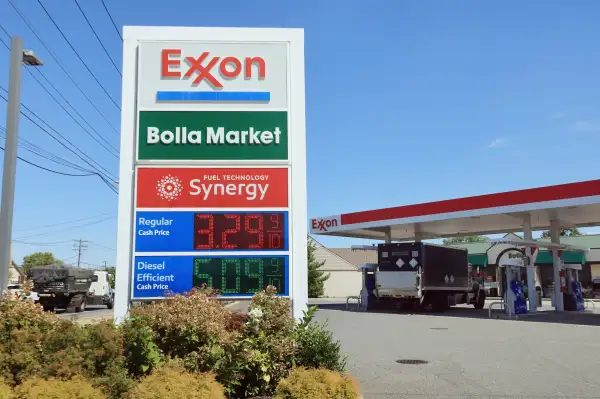Here’s How High Gas Prices Could Go After OPEC Cut Oil Production

A big change in the international crude oil market could drive up gas prices for U.S. drivers — but probably only in some parts of the country.
Earlier this week, the Organization of Petroleum Exporting Countries (OPEC) announced it would cut crude production by 2 million barrels per day in an effort to prop up oil prices, which have dropped to less than $95 per barrel today from more than $120 per barrel at the beginning of June. The wholesale price of crude oil is the biggest factor that determines the retail price of gasoline at the pump.
Gas prices normally dip nationally during the winter months, due to lower demand and a shift to cheaper winter fuel blends. But GasBuddy head of petroleum analysis Patrick De Haan predicted Wednesday that the OPEC production cuts could soon cause a 15- to 30-cent spike in gas prices in certain places. Specifically, the East Coast, South, Northeast and the Rocky Mountain states could all potentially be hit with significant gas price hikes, De Haan said.
“We've already seen prices begin to increase in the South and Northeast, where prices had been stable in recent weeks,” GasBuddy spokesperson Nicole Petersen told Money in an email. “This is a trend we would typically expect to see when supply is tightened.”
The national average price for a regular gallon of gasoline is $3.87 as of Thursday, according to AAA, up from $3.78 last week. That national figure doesn’t illuminate the significant differences in gas prices around the country right now, ranging from $6.42 per gallon in California to $3.22 per gallon in Florida.
Ongoing refinery issues mean those differences will likely persist. “At least six California refineries are undergoing maintenance, and there is limited pipeline supply to the West Coast from locations east of the Rockies,” AAA spokesperson Andrew Gross said in a recent blog post. A recent refinery fire in Ohio shut down production there, too.
Those production snags helped contribute to a spike in average gas prices nationally of 7 cents in a single week after months of declines, and the impact was much greater in the regions where refinery output is down. In Oregon, for instance, gas prices jumped 43 cents in a week.
Why gas prices could fall in some states
GasBuddy’s experts anticipate that prices in the West Coast and Great Lakes states will fall as the refinery issues disappear. This will occur at the same time that there will be upward pressure on gas prices caused by OPEC’s production cuts.
Essentially, GasBuddy is saying that the resolution of ongoing refinery slowdowns will bring prices down enough in the affected regions to offset the price increases stemming from OPEC.
The bottom line is: Drivers in the West Coast and upper Midwest regions can expect gas prices to fall a bit or at least stay flat, while people in most other parts of the country should be ready to pay more at the pump.

